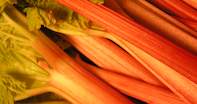Crop Rotation
It is a good practice to rotate crops when producing Swiss Chard to prevent buildup of pests and diseases. Rotate with pumpkin, beans, peas, lettuce, tomatoes, potatoes and cabbage.
Yield (tonnes per hectare)
Conservative: 20 tonnes Average: 30 tonnes Good: 50+ tonnesHarvesting
Harvesting is normally done by hand with sharp knives or small sickles on smaller plots or farming operations. This allows growers to harvest over longer periods and thereby increase yield.
Cut only the outer leaves about 40 mm above the ground. This must be done regularly to promote growth and thereby increase yield. On large commercial farming enterprises this is sometimes done mechanically. On these larger operations plant density is also higher.
Storage
Swiss Chard does not store well and must be kept in a cool-shed as soon after harvest as possible. Best results are at a temperature of between 2°C and 4°C and at a Relative Humidity of above 85%.
Swiss Chard should be kept under refrigeration for a maximum of 7 days before consumption to ensure a quality product. So the product must get to the consumer as soon after harvest as possible.